viernes, 18 de noviembre de 2011
De los kudurrus a Jeff Koons: cómo exponer arte sumerio hoy.
1.- Hans Haacke: ¿arte o documento?
2.- Colección de tablillas con escritura cuneiforme
Texto en inglés de la ponencia sobre la museología (criterios del guión expositivo) de la muestra sobre arte sumerio que Caixaforum prepara para finales de 2012-mediados del 2013 en Barcelona y Madrid, presentada en el congreso anual de la ASOR (American Society of Oriental Research), en San Francisco (14-21 de noviembre de 2011), el sábado 19 de noviembre de 2011:
0.- Introduction
The Cultural Foundation of the Spanish Savings Bank called La Caixa organizes an exhibition on Sumerian art in two of its headquarters, called Caixaforum, in Madrid and Barcelona (Spain), from the end of November 2012 until the end of May 2013. The show will host around 340 original pieces loaned by institutions such as the Louvre Museum in Paris, the Vorderasiatisches Museum in Berlin, the British Museum in London, the Baghdad National Museum, the Oriental Institute and the Field Museum in Chicago, the Metropolitan Museum of Art in New York or the UPenn Museum in Philadelphia. Focused on the subject of the organization of space, it will include tablets, cylinder seals, foundation cones, statues of prayers or jewelry from the treasure of Ur. The god-“architect” Enki, the myth of the order of the world, the tracing of the roads, water channels and posts (during the kingdom of Shulgi), the documents of territorial organization (cadastre of Ur-Nammu) and of urban and architectonical plans, the figure of the builder-king, the foundation rituals, the architectonical typologies such as domestic spaces and temples, and the concept of the last shelter, are some of the issues that the show, with the help of the original pieces, will talk about.
But not exclusively those.
In this paper, I would like to mention some of the museological criteria used to conceive and design this exhibition on Sumer, showing where and why it differs from other approaches.
I would like to deal too about a double ambiguity: the ambiguity existing between handicraft and magical items, and works of art; and the ambiguity between documents and works of art. The first ambiguity affects ancient items: there were useful, magical or religious items that are seen as works of art today. The second ambiguity affects contemporary works of art that are, in fact, documents, but it also affects ancient documents like written tablets which are seen today as small sculptures, mainly because the modern viewer is usually incapable to read the texts. He judges the tablet by its shape, not by what it is written. The shape and the material are taken as aesthetic criteria to judge the tablet as a beautiful or ugly work of art.
1.- Museological criteria:
Caixaforum is known in Spain for its exhibitions on archeology, being a Kunsthalle instead of a Kunstmuseum, as it does not hold a collection on ancient art itself. It does, even though, hold a collection of contemporary art. The shows are self-produced, with inner or outer curators. At the same time they host itinerant shows. In any case, the works always come from private or public institutions.
Dedicated to some of the main ancient cultures (the Persians, the Nubians, the Thracians, the Etruscans, etc. ), and sometimes organized together with other institutions like the Louvre Museum or the British Museum, the exhibitions usually focus on masterpieces, presenting them as works of art, isolated and enhanced. Short explicative texts inform of the important historical and cultural facts, in order to illustrate the importance and the role on their respective cultures. At the same time, the visitor should feel the works familiar and connect to their fascinating appeal, isolated so from the prosaic contemporary world. In a certain way, the archaeological works, that are usually chose among those made of precious materials, evoke past societies presented as lost paradises.
This legitimate approach is usual on archaeological shows around Europe or the United States and not only on those by “La Caixa”. The Metropolitan Art Museum in New York only accepts archaeological masterpieces, as well as the Join of the French National Museums. The expectations of a visitor are commonly known, although when we talk about ancient masterpieces we are judging them under our own contemporary criteria: they are ancient works which we can interpret within known parameters. The visitor should get the impression of penetrating both a tunnel of time and a treasure cove.
I remember the marketing campaign which invaded Barcelona in January 1997, of an exhibition on ancient architectural models. Named Soul Houses, the campaign insisted in presenting the modest works of mud or terracotta as treasures from the ancient times. Treasures: an evoking word that places the works in a timeless, fabulous and inaccessible space, increasing at the same time the importance of the show. The pieces are treated as genius in a bottle: marvelous, fragile, and distant; this focuses the attention to the proficiency and intelligence of the man of the past, in detriment of the loss of values of the present human being and his lack of sensibility towards the art of his time. In other words, archaeological exhibitions represent a very popular genre of shows, and not only those referring to ancient Egypt, at least in Western Europe!
But the question is: is that fair?
The plot and the design of the space (by the Spanish architect and professor Albert Imperial, UPC) of the Sumerian show start from two principles.
The first one is that the importance and the meaning of the works of art of the ancient times is given by us, spectators of the twenty-first-century. These pieces, undoubtedly, had once a meaning that probably had nothing or little to do with the relationship and the value we suppose or we provide.
The second principle has to do with the distribution of the works around the space, with the “museology”: an exhibition, permanent or temporal, involves a movement throughout space. Contrarily to what happens in the so-called “performative arts” (like cinema, theater, dance or music), in which the spectator is fixed in one place, observing without moving how the acts and the actions take place in the space, the experience in an exhibition is similar to the experience that can be found in architecture: the visitor moves, and he discovers in his movement what surrounds him. The final image of what he observes is built and modified throughout the visit. In both cases, the judgment follows a mental construction. Time and space are conditions of that construction. But, in the “performative arts”, like dance or a theatrical play, what is moving is what is shown, while in exhibitions, the spectator is the one who is moving; objects are, obviously, still. On the other hand, the spectator and the spectacle are located in different spaces in the “performative arts”, while art works and visitors are located in the same space in an exhibition. We wander the space of the exhibition; on the contrary, we observe a play or a ballet from outside.
The exhibition in Barcelona and Madrid will host Sumerian pieces, but also some contemporary works: Ur, by Cyprien Gaillard, Mesopotamia, by Ursula Schulz-Dornburg, Shadow Sites II, by Janane al-Ani, Gudea´s Dream, the extreme free jazz oratorio by Piotr Michalowski, together with documents such as texts from the sixteenth century until the thirties of last century, of travelers who went to the south of Mesopotamia, since Benjamín de Tudela, on the twelfth century.
Why including these works, so rarely seen on archaeological exhibitions? The reason is because they are works of art, not documentaries, being, therefore, documents of the same status as the Sumerian “art”.
The chosen ancient works attract our attention. Anthropomorphic figures with a recognizable, very human expression of piety or fear: effigies suggesting helplessness, statues similar to puppets, bringing forward feelings of admiration and compassion. If we take notice of these works is because, unconsciously, we associate them to known forms of representation.
But the truth is we do not really know what those statues are, what they meant or how they were either perceived or interpreted. Neither do we know what they were used for. It seems like the quality and the brightness of the materials (like lapis lazuli, cornelian or gold) were appreciated in ancient times: values or qualities which are not relevant at all to our contemporary judgment of a work of art.
We are dealing with another problem when judging or evaluating ancient artworks. Ancient words expressing aesthetical judgments where denoting moral judgments too. For instance, dug, in Sumerian, meant good, but also beautiful. This also happened in Greece and Rome, where sensible qualities would not differ from the moral qualities. In ancient times, good, necessary, beneficial works were necessarily pleasing; useful, therefore attractive.
Consequently, we, spectators of the twenty-first century, are those who endow the Sumerian imagery of aesthetic qualities. We interpret the objects as if they were artworks; we make them become works of art, understanding or judging them in the same way we understand or judge modern statues. We consider that all works, ancient or modern, exist to make us think and to please us. But the reason or function for which objects were made, four-thousand five-hundred years ago, was very probably a different one. Which one? - we do not know; we cannot know it.
This means that when we expose them to the contemplation of the public we treat them as works of art; but, in fact, they are only works of art because we consider them so. They are art due to the way we look at them, due to our judgment; they are art because we stipulate it that way. Our interpretation creates them.
The aesthetics of reception, active since the end of the twentieth-century, can be applied to ancient art; it suits ancient art well. The way we perceive ancient art determines its status. Ancient objects have no meaning, at least not the meaning with which we infuse them. These objects, so hard or impossible to interpret, become, thanks to the sensations they evoke us, interpretable pieces of art, just as any modern artwork. We make them become artworks destined to awake our senses, or to communicate contents trough a sensible mean.
Sumerian art is, under this point of view, a creation made by us. We know the ancient culture through artifacts we have created. They are contemporary creations; they are a product and an expression of our times; just as the contemporary art works, included in the exhibition.
An ancient art exhibition is, therefore, a show of modern points of view on a culture we can only get to know through our judgments and prejudices. The past is built from the present; it becomes present.
I would like to deal now with another characteristic of the exhibition on Sumerian art. We use to observe in Contemporary Art exhibitions that artworks and documents on artworks are treated in the same way, as if they were the same. It is true that artworks of movements like Fluxus consist of documents. Artists like Hans Haacke create works that are evaluated as artworks, but which are in fact, more or less, sociological documents. I am not judging their aesthetic value. I am just trying to classify them, to know what they are. Are they art?
The only visible differences between an artwork and a document are usually the format and the way to expose them. So, the only visible difference between an artwork which is a document or is based on a document, like Fluxus´art, and a document which is not an artwork is that the first cannot be studied. It has to be looked at, as a work of art, but it cannot be read nor touched.
Therefore, any document can be a work of art. It can be shown as a work of art. There will be no visual differences between documents and artworks, for instance, archaeological material presented as an artwork. You cannot decide, when entering a museum, at least a museum of contemporary art, which is a document, and which is a work of art that consists of a document. If so, there is no difference between an art piece and a document: they both are ways to see the world and to inform about it, saying something new about the world.
It is for this reason that the exhibition includes documents, presenting them the same way the archaeological pieces are presented: magazines, books, manuscripts, pictures and several prints.
But the status of some of these documents is nevertheless ambiguous: What is the original edition of Jean-Daniel Huet, Traité sur la localisation du paradis terrestre, from 1691, including two engravings? Is it a document, similar to the archaeology magazine Iraq, or is it – already- a work of art? There is no doubt it needs to be shown inside a showcase. But just as the magazine Iraq is shown in that way.
This does not mean that the exhibition does not include an area where the public will be able to look for documents, even if some of the documents can also be shown as artworks in the exhibition space! An archaeological exhibition turns to be a theoretical problem!
That means that the exhibition also shows the point of view on the status of what is shown, showing how any object, ancient or modern, offers a window to a culture of the past. A window that we create and open, and that shows therefore what we want to see: it shows us looking at the past, framing the past in a way it becomes comprehensible; this is a past designed to fit us; the only way to perceive the old world and ancient items.
2.- Museographical criteria
But let´s deal now with the museography.
The way to show the objects illustrates our vision of a distant culture. The design develops spatially our vision of the ancient world. The design reflects also some characteristics we know the Sumerian cities had, or at least we think they had.
The exhibition rooms that will host the exhibition, both in Barcelona and in Madrid, can cbe used as a whole space. The design does not include any vertical partition – except for the screens of the video-installations.
The space will be one. From the entrance, the spectator will be able to observe the whole show. There will be one single and continuous showcase, showing pieces, texts and projections. The visitor will move along the frame of the furniture, enter it, exit it, without ever abandoning it. Located at the same height, this sober continuous show case creates an almost arid space, in the middle of a white room.
From the entrance, a continuous and laberynthic way starts. Why?
Many myths report stories of initiation journeys. The protagonists, heroes or legendary characters, set off looking for themselves, fulfilling the prediction of the oracles. They have to break with their surroundings. In fact, if they ever come back, the order of the world will change. They are challenged. They have to overcome a series of obstacles, in order to show their braveness to themselves and to the others. They leave ignoring whether they will ever return; they travel to places never trodden before, defended by monsters – Cerberus, ogres or cannibals, and barriers never crossed before.
The trip to the hereafter was the ultimate trip that could be done. If they would return, they would do it transformed, both physically and spiritually, ready to undertake a new and last life.
So it happens on the Poem of Gilgameš. It narrates the trip to the last borders of the world of the king of Uruk made by Gilgameš and his loyal squire, Enkidu. They go searching for what constitutes human condition, the place they occupy in the world and in relation with the gods.
.This journey, that Enkidu does not finalize, is concluded by Gilgameš after overcoming the death of his friend and accepting the mortal condition of man, and had a decisive influence on later mythical and popular narrations. Some of the journeys of the tales of the One thousand and one nights are based on the explorations of Gilgameš.
Already on the end of the Roman Empire, Christians of the West took a troublesome journey to the East. They were looking for the Promised Land, promises of happiness or full life. Benjamín de Tudela in the twelfth-century abandoned the Iberian Peninsula to travel around what was thought to be the borders of the earth, even before Marco Polo shifted the last frontier that Alexander the Great, from Macedonia, had crossed already in the fourth-century before Christ.
The journey in the direction to where the sun rose was not so exceptional up from the seventeenth-century. They prompted the first archaeological missions in the Middle East since the first half of the nineteenth-century: men and women left to explore, to obtain goods, wealth and power, but also for the pleasure of traveling and forgetting where they came from.
The exhibition is a journey. It has lead to a journey through a land or a country, Iraq, which has been presented in images and imagery, since the nineteen-eighties, as a devastated land. Pictures and films of contemporary artists, like those mentioned before, witness the fascination of the journey to the sources of culture, or what remains of it.
An exhibition is a long journey: through an ancient culture, maybe less known or forgotten, and through the steps followed by the scholars in order to discover or dream that culture. This is the journey proposed by Before the Flood. When Earth was Eden (Sumer, 3500-2100 b.C.).
A journey in space and time, articulating two of the inner components of the buried cities: the permanence through the intimate or never-ending union of the remains with the earth with which they merge, and the physical and mental travel caused by the encounter with an ancient culture.
3.- Conclusion
An ancient art exhibition consists, in summary, in a reflection on what is exposed and the way it is presented. Just as in science, when the observation modifies the observed, the exhibition creates what is exposed. Pieces, without a doubt crafted or magical, obtain the ambiguous status of work or art, whose function does not consist anymore on educating people or letting them entering in contact with the gods, but in attracting the attention of the viewer, without expecting a physical reaction from his or her. All objects, from tablets to pots, from statues to simple bricks, are transformed in artworks, worth to be contemplated.
Contemporary art has taught us already that any object can be a work of art: what really counts is the critical or textual body that accompanies it, justifying the metamorphosis of the object into an artwork.
An archaeological piece becomes therefore an interpretation of the past, a past we reconstruct from the items after they become works of art. The past is our creation. Thereby it becomes meaningful and warns us, always too late, of the virtues and the risks of the present.
Text: Pedro Azara
Images: Marc Marín
Suscribirse a:
Enviar comentarios (Atom)












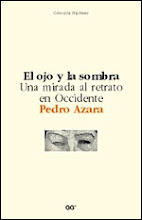



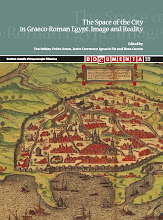
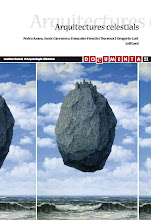

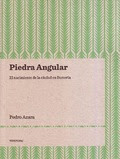








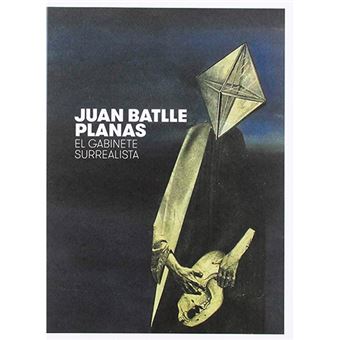


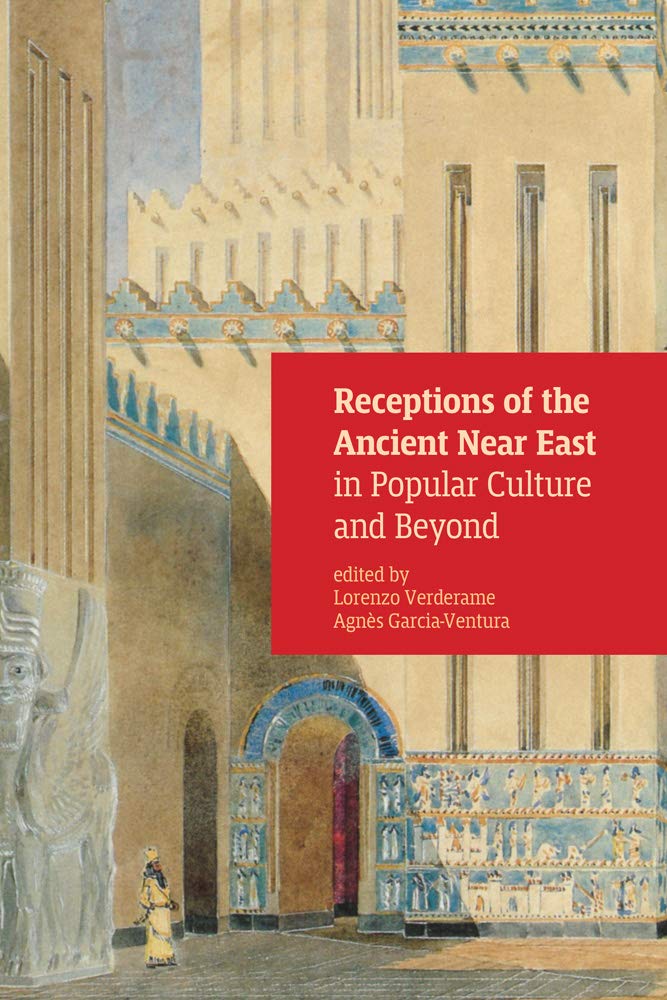

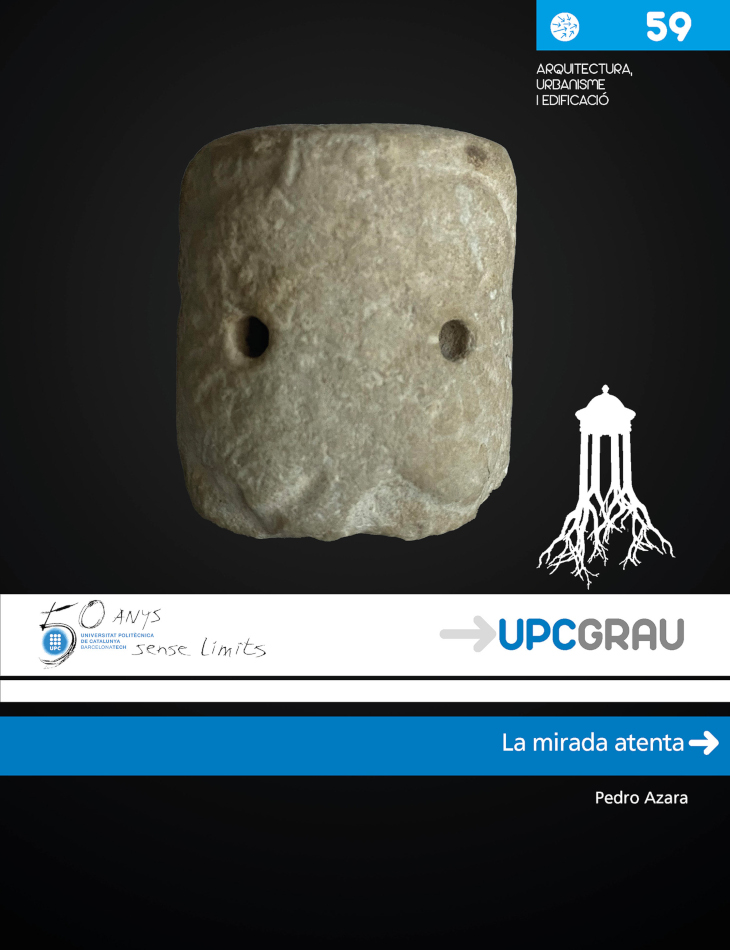




No hay comentarios:
Publicar un comentario